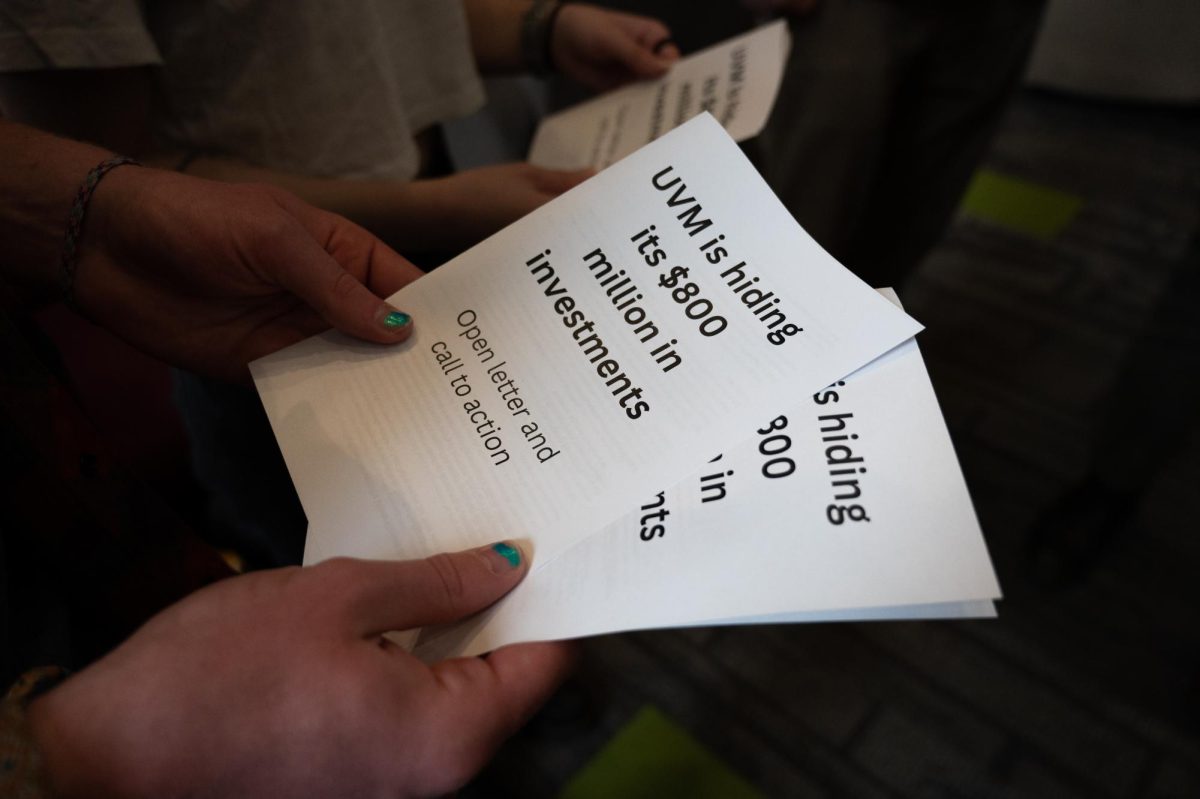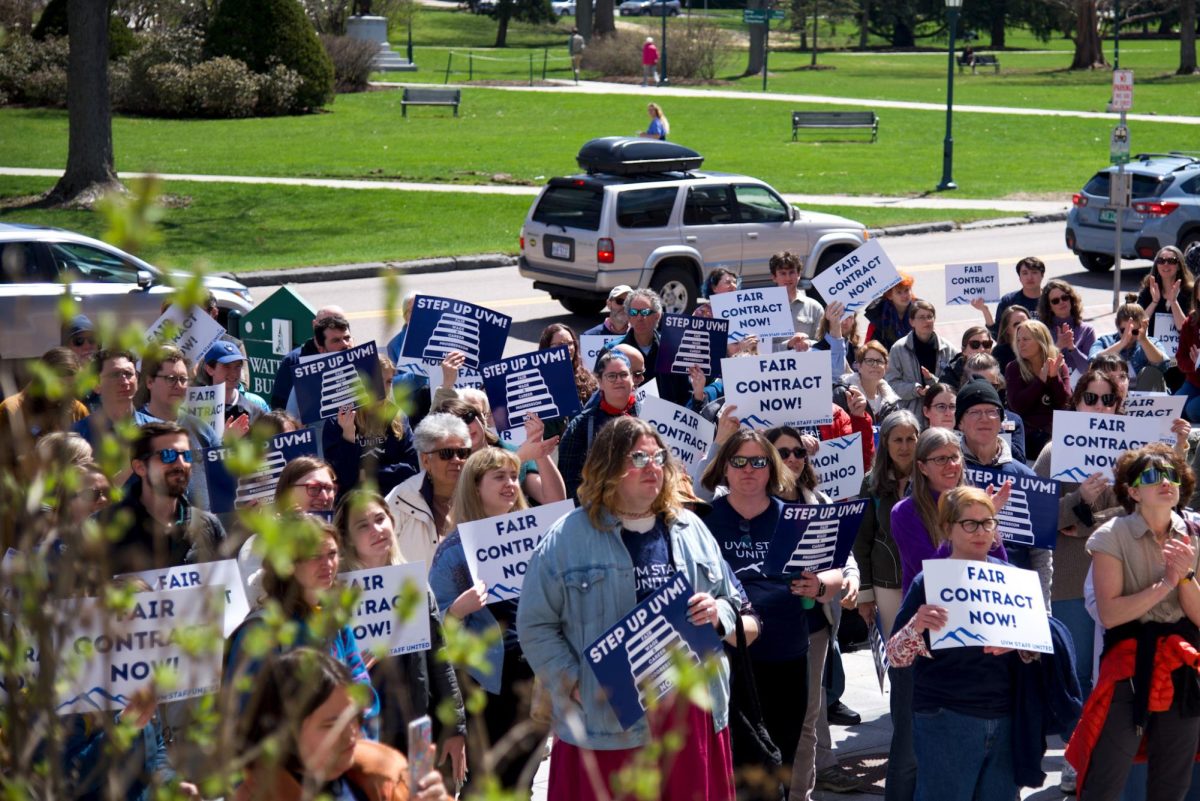The predominantly gray skies cast somber shadows over Georgia’s route 185 South, that had become congested with the Thanksgiving traffic. A minority of the people driving the Georgia highway were not doing so to celebrate with family, instead they traveled to participate in a different gathering of solidarity. The premise of the gathering was that the School of The Americas, a United States military training camp, is responsible for many accounts of human rights violations.
Representing The University of Vermont were the Students for Peace and Global Justice, “an organization with the intent of promoting dialog and awareness of global justice and fairness” according to Colin Robinson, a junior at the university.
Eight students departed from Old Mill at seven p.m. on Friday the nineteenth, with high spirits and the intent to quell injustices committed by the United States. When asked why The SOA should be protested, Evan Forward, a Junior at UVM, allowed his pen to hesitate in mid stanza before answering, “The SOA is symbolic of United States foreign policy because it shows that we stigmatize the international system, by regulating the world.” Forward continued by saying ” The United States spends money on the military and the military creates the ability control to the economic system.”
The evolution of the SOA dates back to 1946, when the Latin American Training Center-Ground division, was established to educate South and Central Americans in the tactics of war. In 1968 the academy became known as the School of The Americas, until 2001, when it became known as WHISC. Through the years the school as graduate approximately sixty thousand officers, cadets and non commissioned officers from twenty two Latin American countries.
The school has been stigmatized for using torture manuals in the training of the Latin soldiers, as well as graduating many who have been responsible for injustices, such as the 1989 assassinations of six Jesuit Priests and two attendants in El Salvador. Graduates of the school have also been linked to the killing of thousands in Guatemala and one hundred eighty Columbian union members. The protests against the SOA or WHISC began in 1989, in response to the murder of the six Jesuits in El Salvador. The protest has been an annual event since, though the base of participants has proliferated beyond Jesuit pacifists, to include human rights activists and those who oppose free trade. It is believed by the SOA protesters that the school is not only responsible for many unjust deaths, but also for the oppression of the proletariat farmers, union members and general working class, by allowing the elite to wield the might of United States trained soldiers.
When the Students For Peace and Global justice rolled into the Howard Johnson parking lot in Columbus Georgia, the night air resounded with a din of voices. And although the crowd was diverse in race, nationality and ethnicity the sentiment was homogenous. That same night was spent in a camp ground outside of Columbus. The night could have been disheartening because the air was cold and syncopated by the sound of rain drops, but the luminous fires and jubilant voices alleviated the cold and made the rain seem distant.
Sunday morning the sidewalks were scattered with 15,000 people of all ages and walks of life, bearing smiling faces, disheveled hair and home-made crosses, painted white and marked with the names of those who have died at the hand of SOA graduates. As the people began to gather in columns, approximately twenty bodies in width, the feeling became one of lament, conveyed through the voices of those who sang the names of the murdered priests and proletariat. A police helicopter ascended the sky to monitor the protest and disrupted the procession by diminishing the volume of the singing voices with the tenacious wine of the engine. The helicopter began to descend over the people, so that the tumult of the engine increased, though it could not subdue the people, who sang louder and with more intensity than the machine.
As the day progressed many of the objectors “crossed the line,” resulting in arrest by the military police. “Crossing the line” is a term that has become common among the protesters and is representative of entering the military property. Once the line is crossed the dissenter is arrested and summoned to court, where many are sentenced to terms in federal prison. Those who are incarcerated are known as “prisoners of conscious” and do not always fit the quintessential image of a deviant protester, but are often people of prominence, like Father Joe Mulligan, who was sentenced to three months confinement.
After fifteen years of protest the demands of the people have not yet been met, though the passion of the protesters remains obdurate. Because of influential people like Father Daniel Hendrickson, who said that “the protests are a catalyst for recognition and accomplishment” the nonviolent protests will persevere. But with or without “recognition” one must observe that Father Hendrickson’s goal of closing the SOA has not been achieved after fifteen years of peaceful assembly.
Perhaps other means of enacting social change need to be considered, perhaps nonviolence has proved itself inadequate. When asked if violence against the United States federal government could be justified, the Reverend Grayland Scott Hagler responded, “it depends who is asked, because violence can be misunderstood. After all, what do we call ‘violence’? Economically we destroy lives without a shot fired.” Reverend Hagler continued by saying that “violence can be justified when it is used by those who are being exploited, though one must never use violence against a nonviolent action, because the violence will illicit a response.” In the case of a protest, a violent action would illicit a violent retaliation by the authorities. Causing the integrity and effectiveness of the protest to abrogate.
The contingency of protesters remains nonviolent and resolute, though their ability to create change is dubious, due to the fruitless toil of the past fifteen years.
















